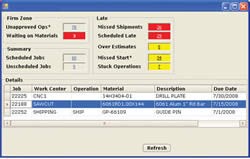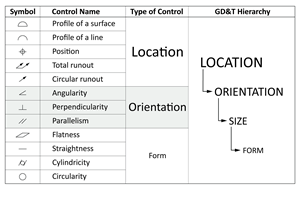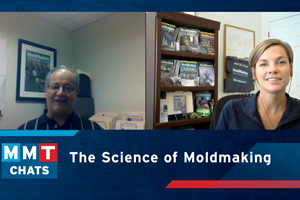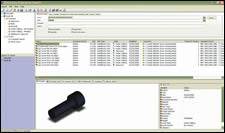Managing the Schedule, the Re-Schedule and the Bottlenecks
Production planning is easy with the right tools in place to deliver the information needed in real time.
Share
Read Next
We all recognize the obvious: mold shop operators face tough challenges in the years ahead. The economy is heading toward a recession, competition is driving prices down, customer demands continue to increase, and customers have more tools than ever to shop for the lowest possible price.
And, yet, successful operators are finding ways to fight back. Some are driving quality initiatives through all levels of the organization. Some are automating every manual process in the plant they can. Others are wringing value out of their production planning system. In fact, many are doing all three.
The third of these three initiatives—production planning—may sound less critical than the other two. However, think about it: mold shops are primarily selling their time; those that can make more strategic use of time are the ones that will get ahead.
Production Planning
The trick to production planning is managing the schedule, the re-schedule and the bottlenecks in the process. Easier said than done, but not impossible when you have tools that deliver the information operators need, in real time, to help schedule effectively and hit the curveballs that are thrown in your direction.
Price, of course, will always be a primary factor in determining to whom a customer will award an order. However, almost as important for many customers is being able to rely on the commitments a moldmaker makes to them. In fact, customers may be willing to pay a slightly higher price if they know they can get those parts when they need them.
For many shops that quote dozens—or even hundreds—of jobs in a week, determining a “capable to promise” date would be close to impossible without a robust production planning system in place. Relying on your gut or looking at a manual scheduling board that might be a week old doesn’t cut it anymore.
Necessary System Facets
Utilizing a planning system that integrates basic facets—routing of parts, identifying resource constraints, estimating of active orders—gives shops a legitimate ability to predict an accurate completion date.
Still, change happens. That is why it is so critically important to implement a production planning system that can be relied upon. For instance, a good planning system offers the flexibility to indicate by time, quantity or percentage of completion the amount of overlap an operation may have.
The need for agility doesn’t stop once the job is released to the shop floor. Customers are constantly calling, asking to push dates or expedite orders. In many cases because their own MRP, or production planning system, is unreliable. So, the ability to quickly and easily split production on a previously started order, have the costs roll forward accurately to the split lot, and then schedule the split lot for delivery is imperative. Seeing the effect of these changes in real time to re-commit to a new delivery date on the remainder of the order is critical to building customer confidence and loyalty.
When a moldmaker has laid the foundation for planning effectively he’s collecting data in real time, the end result is a visual tool to assist him in making critical decisions while his customers are on the phone. Imagine having your best customer on the phone and while he’s making his adjustments, you can view your current workload versus capacity and determine at a glance where you have room to insert more work, where you are nearing capacity and where your bottlenecks in the shop currently are.
Or, being able to look out a week or two, and see exactly where you need to re-allocate resources, work overtime or make other adjustments because the sales staff has sold more capacity than your shop has ability to do in a normal schedule.
The velocity of change is often too dynamic to be satisfied looking at simply a daily view of your reality. Operators need the ability to drill down minute by minute or hour by hour into their production schedules. Unless one is maximizing the right scheduling and production planning system, this view would be nearly impossible to recreate on a manual whiteboard. And yet, customers are demanding this almost on a daily basis.
How does a mold shop account for material availability? For many shops, the luxury of having cash tied up in inventory and the additional carrying cost of that inventory (upwards of an additional 30 percent of your current inventory valuation) is just not reality. So, a production planning system must integrate seamlessly with your material planning system and give the flexibility on an order-by-order basis to indicate either that the production plan should be the scheduling driver for material due dates or material due dates should be the scheduling driver for a true production plan.
Likewise, if a work center is constrained by people, the ability to quickly and easily add or remove those people resources to the schedule and see the effect of people and machine resource capacity is critical. This visibility of the production schedule and employee availability will be a key component in driving efficiencies throughout the shop floor by allowing shop foremen and supervisors the ability to review the production plan and actually assign work to employees based on the combination of the schedule and skill set of the employee.
Summary
The one constant in most mold shops is the burden of dealing with the change and chaos that customers put on planning resources each and every day. It is a balancing act between meeting their demands, availability of raw material and utilization of a shop’s people and machine resources to maximize productivity and profits each and every day.
So, in order to provide exceptional customer service and drive more profits to the bottom line, small and mid-size customers must implement and maximize their production planning capabilities. For some shops, this may mean a radical re-thinking of the way they do business today.
Related Content
Tolerancing in Mold Design, Part 2: Using GD&T to Address Conventional Tolerancing Issues
Mold designers can achieve a single interpretation of workpiece functionality when following the American Society of Mechanical Engineers Geometric Dimensioning and Tolerancing standard.
Read MoreOEE Monitoring System Addresses Root Cause of Machine Downtime
Unique sensor and patent-pending algorithm of the Amper machine analytics system measures current draw to quickly and inexpensively inform manufacturers which machines are down and why.
Read MoreSimulation is a Process, Not Just Software
To reap the benefits of simulation, you must view it as a process requiring you to change the way you work in part and mold design.
Read MoreMMT Chats: The Science of Moldmaking, Part 1
MoldMaking Technology Editorial Director Christina Fuges chats with Don Smith, North American Senior Tooling Engineer for Scholle IPN in Northlake, Illinois about the future and science of moldmaking.
Read MoreRead Next
Twelve Techniques for Managing Moldmaking Design Data Effectively
Mold manufacturers can address time, cost, quality and global communication challenges by using 3-D CAD software in combination with an integrated product data management system.
Read MoreHow to Use Strategic Planning Tools, Data to Manage the Human Side of Business
Q&A with Marion Wells, MMT EAB member and founder of Human Asset Management.
Read MoreAre You a Moldmaker Considering 3D Printing? Consider the 3D Printing Workshop at NPE2024
Presentations will cover 3D printing for mold tooling, material innovation, product development, bridge production and full-scale, high-volume additive manufacturing.
Read More









_300x250 1.png;maxWidth=300;quality=90)




.jpg;maxWidth=300;quality=90)













